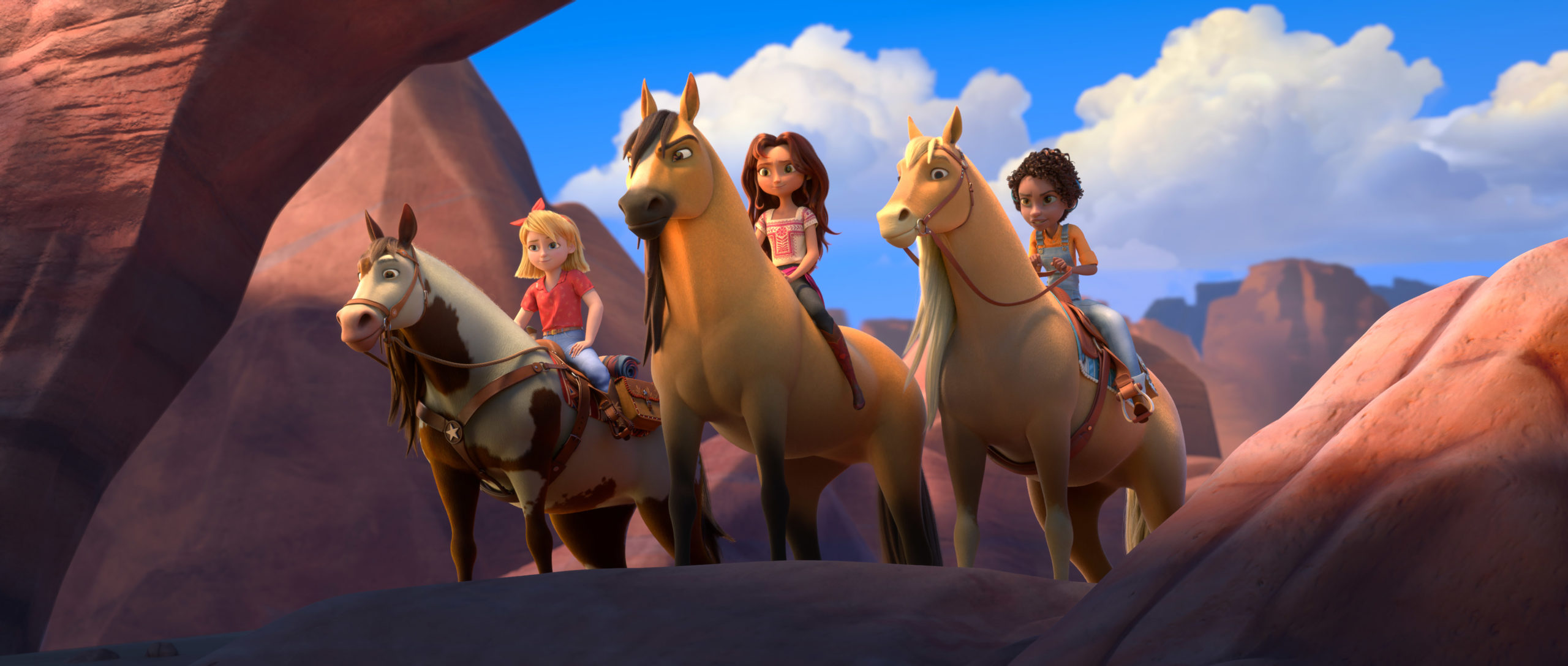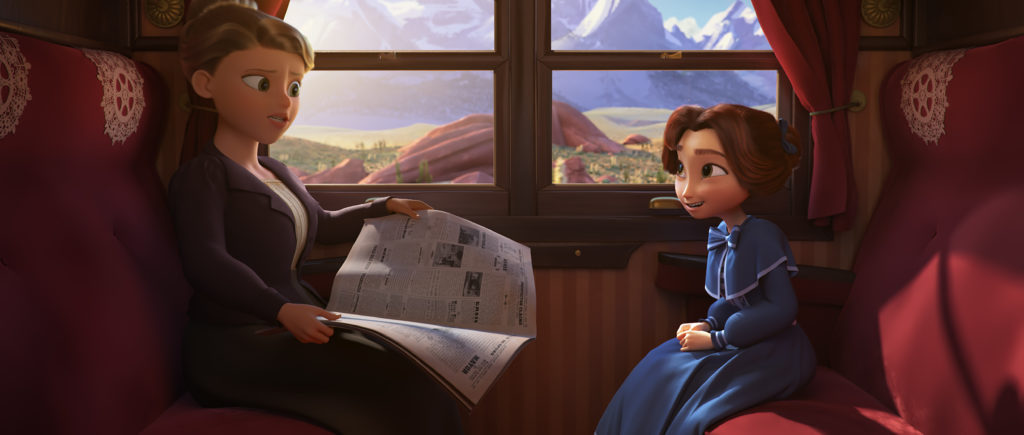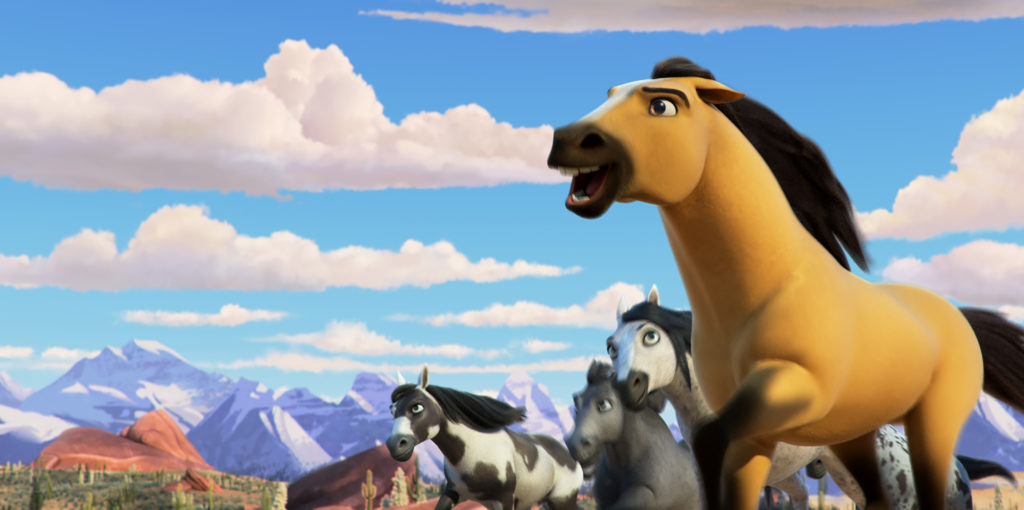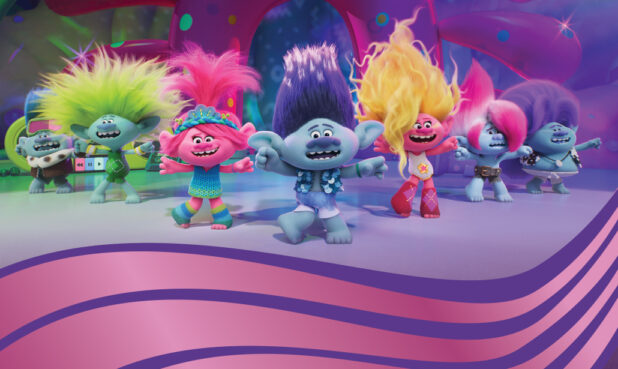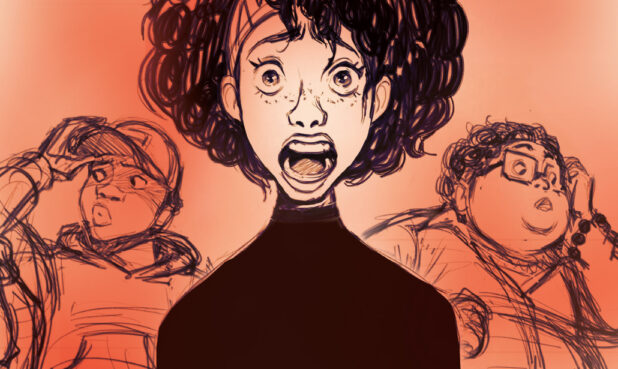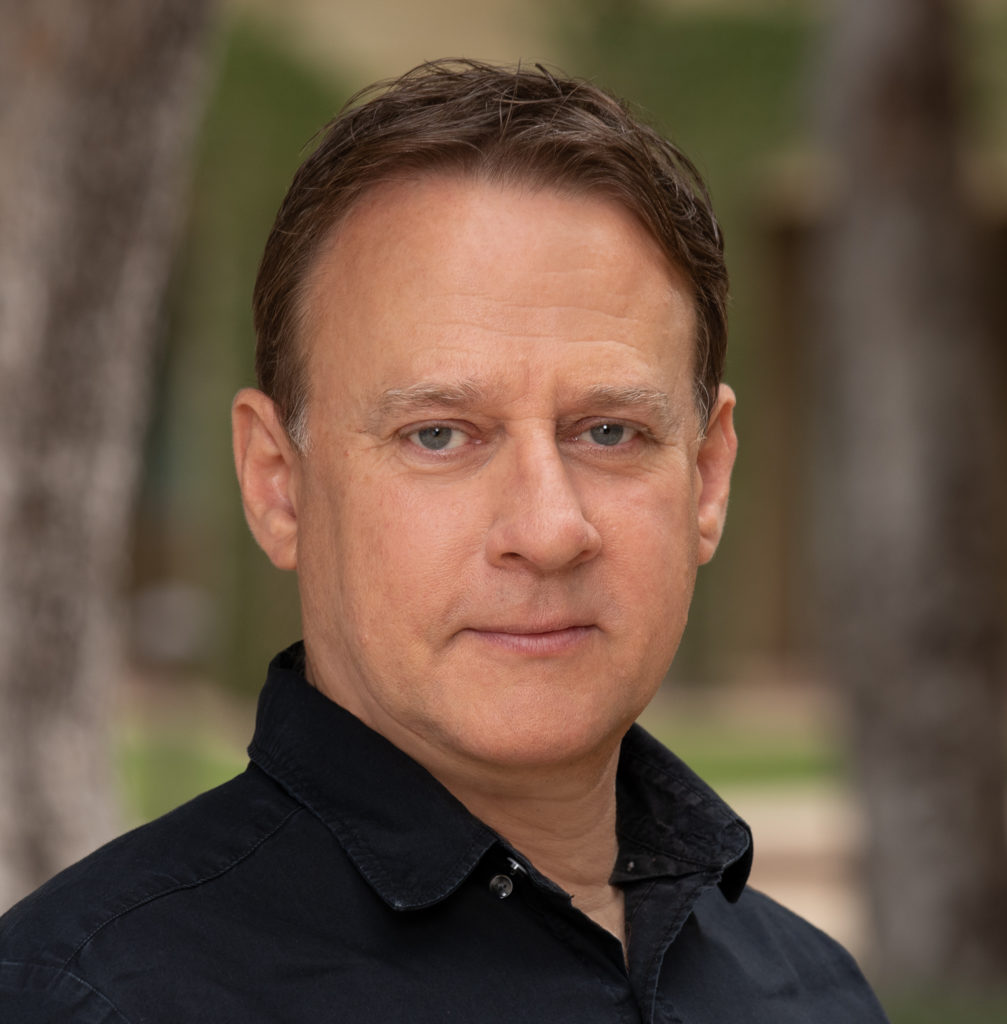
How did you establish the film’s unique Western mood?
The studio said, we want a Western but it can’t feel like a dusty Western. So I started to look at some of the California gold rush towns like Angels Camp, Jamestown, and Murphys. They’re gorgeous. What’s really fascinating to me about them is they feel a little worldly. So many immigrants came from so many different places so fast, and there’s a ton of little weird styles. I feel like that part of the world is underrepresented. I haven’t seen it that much in movies.
Another thing we wanted to do when it came to showing the West was don’t geo-place [it]. You’ll see sequences in the movie where we’ll be up on a ridge that looks like Arches National Park in Utah, and then you’ll look down on something that looks like Devils Golf Course in Death Valley. One minute we’re in Canyon de Chelly, which we loved, and the next minute we’re in the Tetons. We basically started to crash worlds together. It’s an homage to everything.
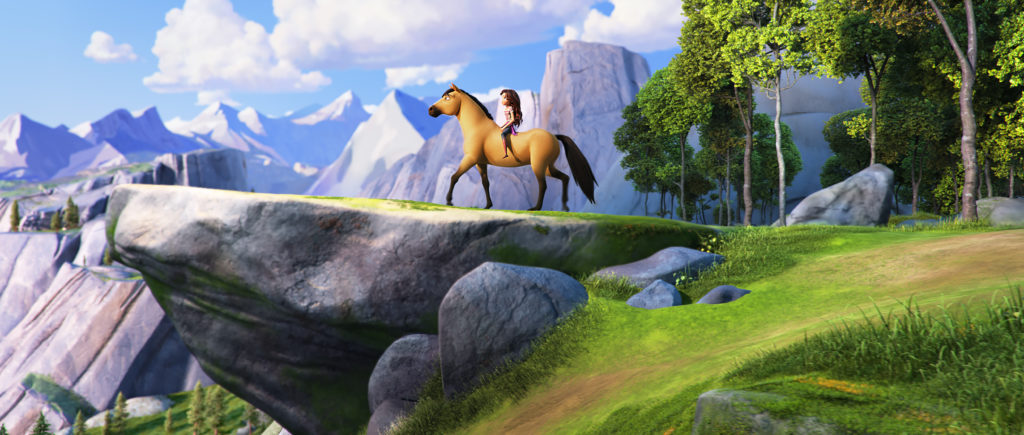
Tell us about the painterly look of the movie.
I was a background painter on the first Spirit. In DreamWorks history—in the folklore of movies we’ve made—that was one of our favorite movies ever, because back in the day we were all plein air painters. We were in love with artists like Ed Mell and Edgar Payne, and the number one was Maynard Dixon. He is our god. Amazing, amazing artist. That original movie, we got to paint like Dixon. Twenty years later, they asked, you want to make Spirit 2. And I’m like, I get to paint like Maynard Dixon again! I was so excited. … If you look at [his work], some of the things look really like animation backgrounds. The same sort of style. It’s very decisive light, decisive color. It seems like a really beautiful place for a wild stallion live.

Why did you build some of the sets in 3D before they went into rough layout?
Instead of using all these big paintings of sets, you can take these scratches and scribbles and talk to a 3D art modeler. You start building that set and get in there, hands on, and then you start to know the scale. Are we building too much? Are we building too little?
On this movie, it was a very tight deadline. We had to go from greenlight to done in less than two years, which for animation is very quick. We never had one set that we didn’t use. I put that all down to the 3D art modeler. Because story would come along and say, oh, we had a river but now it’s not a river, it has to be a gorge. Well, in the model let’s take the water out and make a gorge. We were able to manipulate and come back to them when the iron was still hot. It’s not like you make this amazing beautiful model with everything done. It’s really down and dirty. It can’t be used for production because it’s so light, but it gives you the ability to create on the fly in 3D—scale and knowing how to build, knowing where to stop.
You also put a few sets in VR. How did this serve the movie?
VR is so exciting for me. To build these great sets with color and stuff like that, and then basically you put a helmet on, you walk through town. You go oh, if we build something here, that’d be cool. Look at that vista, if we fixed that mountain, move that mountains, and we’re literally standing in the middle of moving mountains. You get to see the vertigo. You can keep the perception of the scale and the grandness, [and] you’re being very smart in your placement because you’re standing there.
Another great thing about VR is you get story in there. You’re able to put that helmet on storyboard artists’ heads. What invariably happens in animation is you’ll build a set and story will come along and design some sequence that has nothing to do with the set, and then you have to rebuild. But if you get a storyboard artist into that VR set, they go, this is amazing, I could build my gag here and here. Then the artist isn’t reinventing the whole world based around a gag or sequence. You’re at least giving the storyboard artist and director an opportunity to see the set and place that gag in something that already exists. That’s vital, and I can’t put a number on it, but it saves a ton of money. Going forward, every chance I get, I’ll do the set always in 3D, and when it feel necessary, put it into VR.
What did you want the overall look of the movie to say about the story?
Basically, we sort of sectioned off the movie. At the start, this girl Lucky is in her grandfather’s mansion. That’s in a sort of big J.P. Morgan-type industrial town. That whole world is straight lines and columns, and everything is trapped. She’s basically like a little bird in a cage. She actually has a yellow dress on so she looks like a canary. Even when Lucky leaves this mansion, she’s in one of grandfather’s trains. The interior of the train is all steel, and the light comes in as a shaft, where outside is free. And then Miradero, the lines are breaking up, the light’s dappling. She’s on the frontier. Man’s footprint right at the edge of the wilderness. And Spirit’s world is basically free. It’s like a horse’s mane in the wind. Every line is free-flowing and curving.
All that was based on the arc of the character. It was weird because I put that in place pretty early, and any time I deviated from it, I guess it resonated with the executives and the director, because they’d say, hey, what about that thing you said, what about that arc? You’re going away from the arc. If you set out something simple at the start, it’s great. There’s nothing worse than just blue skies. Do whatever you want. You get confused. What do I want? I’m not sure. But if you have that dressmaker’s dummy, that structural thing, you can make that beautiful dress—you can make that beautiful movie.
